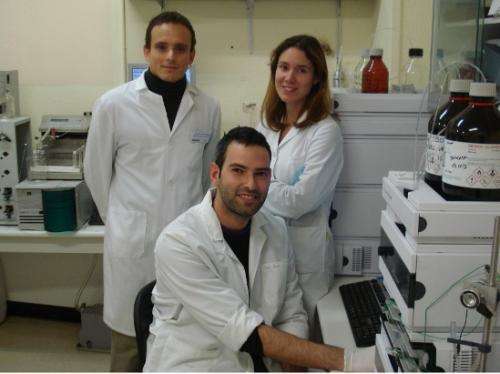Researchers find exposure to pesticides in food, air and water increases risk of type 2 diabetes

A study conducted at the University of Granada has revealed that there is a direct relationship between exposure to pesticides (Persistent Organic Pollutants, CPOs) in food, air and water and prevalence of type 2 diabetes in adults, regardless of age, gender and body mass index. These substances tend to concentrate in body fat, and they might be one of the reasons why obese people are more likely to develop diabetes, since the more fat the higher the COP concentrations in the body.
In a paper recently published in the journal Environmental Research, researchers demonstrate that people with higher concentrations of DDE –the main metabolite in the pesticide DDT– are four times more likely to develop type 2 diabetes than other people. In addition, the risk of type 2 diabetes is also associated with exposure to β-HCH (beta-Hexachlorocyclohexane), which is present in the formula of the pesticide Lindano.
A study with 386 subjects
To carry out this study, the researchers analyzed the concentrations of a specific group of COPs in the adipose tissue of 386 adult subjects assisted at San Cecilio hospital, Granada, and Santa Ana hospital, Motril, Spain. According to the University of Granada and San Cecilio researcher, Juan Pedro Arrebola, "human adipose tissue (commonly known as "fat") acts as an energy reservoir and has an important metabolic function. However, adipose tissue can store potentially harmful substances, such as persistent organic pollutants (COPs)".
This makes COPs concentrations a useful marker of a subject's exposure to COPs. COPs are a group of chemicals with diverse characteristics which are present in pesticides, industrial waste and building materials. These compounds penetrate the body mainly through food, but also through air or the skin.
According to professor Arrebola, "the mechanism of action by which COPs increases the risk of diabetes is still unknown. However, some researchers have suggested that COPs might cause an immunological response when they penetrate estrogen receptors in tissues associated with the metabolism of sugars."
The prevalence of diabetes in the world has significantly increased in the last decades. It is estimated that by 2030, 4.4% of the world population have this metabolic disorder. This will have a severe impact on public health programs, since it is highly resource-consuming. The factors causing such increase in the prevalence of diabetes are not still clearly understood.
This research study was conducted by researchers at San Cecilio University Hospital, Granada, the University of Granada and the Andalusian School of Public Health, Santa Ana hospital, Motril, and the Hospital del Mar d'Investigacions Mèdiques, Barcelona. According to the authors of the study "we are an example of clinical research focused on common diseases with a high impact on health".
More information: Arrebola, J. et al. Adipose tissue concentrations of persistent organic pollutants and prevalence of type 2 diabetes in adults from Southern Spain. Environ Res. 2013.doi:pii: S0013-9351(12)00321-0. 10.1016/j.envres.2012.12.001

















